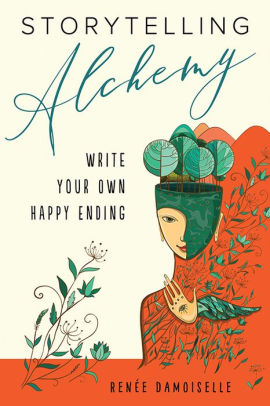Damoisell uses a conversational tone in this book. While she discusses scientific topics, she still puts them in words and concepts non science people can understand. Her topic and approach may be academic her tone, word choice and writing style are meant for the average person. She takes a no nonsense approach and works to dispel some of the century old belief like witches work with demons.
Discusses seven essential tools including the story you tell yourself; a journal; meditation; ritual; sacred space; mindfulness and dreams. While she says journal, she clarifies it doesn't have to be an actual journal...it can include art, clippings, photos and more. Her meditations are uncomplicated and well thought out. They are easily set up to record or have someone read them to you. Damoisell includes exercises for the reader to do and write about. These are meant to create a transformation in the reader.
One big concept Damoisell stresses is how the reader thinks about memories. She stresses memories are subjective and how looking at them in different ways can change our perspective. "How we think about the past determines how we feel about it and perhaps most important how it affects us in our present" pg 13 She encourages you to look at the negative memories you have in order to turn them into your own positive story. Conversely she says that using a happy memory is not good to turn into a transformative story.
Damoisell takes an inclusive approach to her rituals. She includes a variety of gods and goddesses including Jewish Christian and other religious beliefs. Additionally she includes fairies local Legends and spirits as well as ancestors.
This book offers some tough concepts presented in a positive and easy to understand tone. Damoisell assists the reader in finding new ways to look at memories and reshape the story they tell about themselves. It’s well worth the reader’s time.
~review by Eileen Troemel
Author: Renee Damoisell
Weiser Books 2018
p. 183
Storytelling Alchemy: Write Your Own Happy Ending

©
2010 - 2024
Facing North
